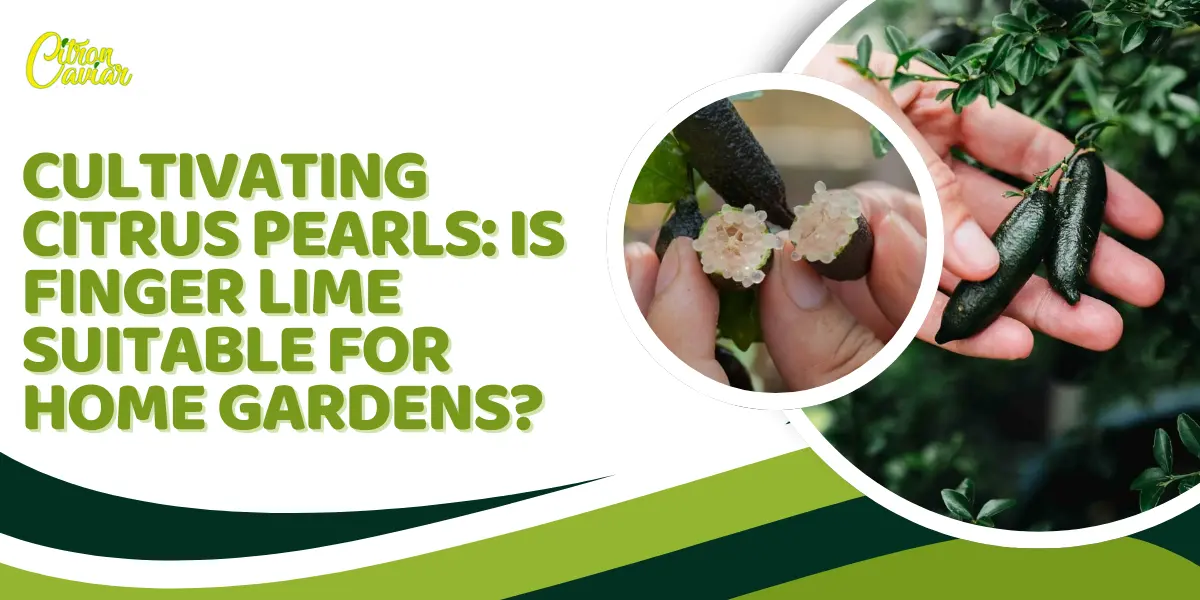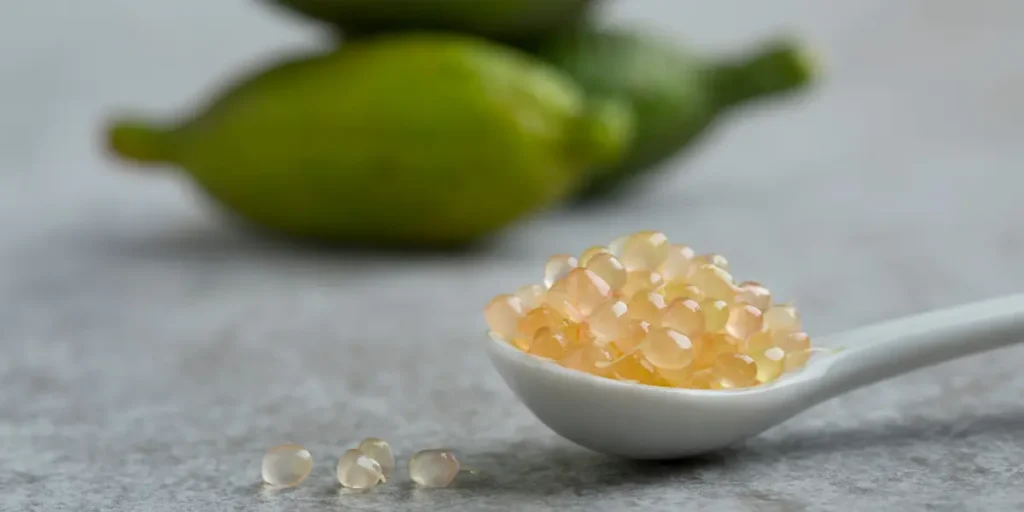Cultivating Citrus Pearls: Is Finger Lime Suitable for Home Gardens?

Native to the area, finger limes (Citrus australasica) yield long fruit that resembles stubby little fingers. The pulp within is composed of tiny, translucent balls that are simply brimming with flavor and what people enjoy. Just cut the fruit in half, squeeze out the pulp, and use it to add a little citrus zing to salads, desserts, seafood dishes, and even cocktails.
However, being one of the Australian native plants, it now seems easy to grow in your home garden. But is that all? We will help you understand its benefits and provide some tips on growing finger limes at home.
What Makes Citrus Pearls So Special?
The fruit of Finger limes, a distinctive citrus variety distinguished by its long, finger-like form, is the source of Citrus Pearls. Glistening, caviar-like sacs are visible when the fruit is cut open. These pearls are a versatile garnish and ingredient in both sweet and savory dishes because of their zesty lemon-lime flavor that pops in the mouth.
Citrus pearls, also known as caviar lime, are being used by chefs all over the United States to enhance dishes with both taste and appearance, from fresh oysters to sushi, cocktails, and even desserts. The pearls offer a delayed, unexpected flavor explosion that makes for a memorable meal, in contrast to traditional lime juice, which spreads rapidly.

Different Varieties: Red Finger Limes and Beyond
Red finger lime is one of the exciting new varieties introduced to the market due to increasing demand in the United States. However, traditional green finger limes remain the most popular. These uncommon cultivars offer a slightly sweeter, berry-like undertone in addition to a striking crimson hue.
Red finger limes are a highly valued addition for gourmet chefs and food stylists because they provide contrast and elegance in plating.
In addition to their culinary value, red finger limes and other Citrus Pearls are gaining popularity in niche markets such as luxury catering, artisanal beverages, and farm-to-table dining. They are very sought after in fine dining experiences due to their rarity and versatility.
Why Citrus Pearls Appeal to Home Gardeners
Growing finger limes has become increasingly popular among American gardeners who are excited about growing exotic produce. The first is the pleasure of picking a fruit that feels gourmet and uncommon, and the second is the adaptability of finger lime trees, which, with the right care, can thrive in a variety of environments.
Growing a finger lime tree at home is totally feasible if you're interested in making your own Citrus Pearls. Beyond their adaptability, the seasonality of finger lime caviar makes them even more special, as their harvest periods allow gardeners to enjoy fresh citrus pearls at just the right time.
Finger limes can flourish indoors in containers or outdoors in warm climates, regardless of where you reside, such as Florida, Texas, or other citrus-friendly states.
Finger Lime Home Gardening Tips
The benefits of growing finger limes at home outweigh the time commitment. Here are some essential finger lime home gardening tips to get you going:
Choose the Right Environment:
Finger lime trees prefer warm temperate to subtropical climates. Grow them in containers if you live in a colder climate, and bring them indoors when the weather gets cold.
Soil and Drainage:
Well-draining, slightly acidic soil is ideal for these trees. Steer clear of heavy clay soils that retain water because root rot is a common issue.
Sunlight Requirements:
Your tree should receive at least 6 to 8 hours of direct sunlight each day. Grow lights or a window facing south are the best options indoors.
Watering:
The secret is consistency. Don't let the soil get soggy. Although established trees can withstand some drought, frequent watering remains beneficial.
Pruning and Care:
Naturally, finger limes are prickly shrubs. Pruning lowers the risk of pests by improving air circulation and helping to shape the tree.
Fertilization:
Finger limes do well with balanced fertilizers high in potassium, phosphorus, and nitrogen, just like other citrus. For fruit and blooms that are healthy, fertilize during the growing season.
Pollination and Patience:
Fruit production on finger lime trees can take 3 to 5 years. Pollinator activity (such as bees) increases yields, even though many varieties self-pollinate.
With the correct attention, you can be cultivating citrus pearls in your backyard in no time. Besides, you get the experience of growing an Australian native fruit, which you can only find on Australian farms.
Conclusion
Choosing to grow a finger lime tree at home is more than a gardening project—it’s an invitation to enjoy one of the world’s most unique citrus fruits right from your backyard.
With their dazzling citrus pearls, finger limes elevate everyday meals and add gourmet flair to home kitchens. While growing them requires patience and care, the rewards are immense, both in flavor and in experience.
Globally, Citron Caviar, the largest exporter of finger limes, has set the benchmark for quality and accessibility, ensuring these rare fruits reach homes and restaurants worldwide, inspiring gardeners and chefs alike.
FAQs
Yes, finger lime, often called citrus pearls, is suitable for home gardening. It thrives in well-drained soil, sunny locations, and requires regular watering, producing unique, caviar-like citrus pearls for fresh use.
To grow finger lime in your backyard, plant it in sunny, well-drained soil. Water consistently, protect from frost, and prune lightly. With proper care, it will produce citrus pearls that are ideal for culinary use.

